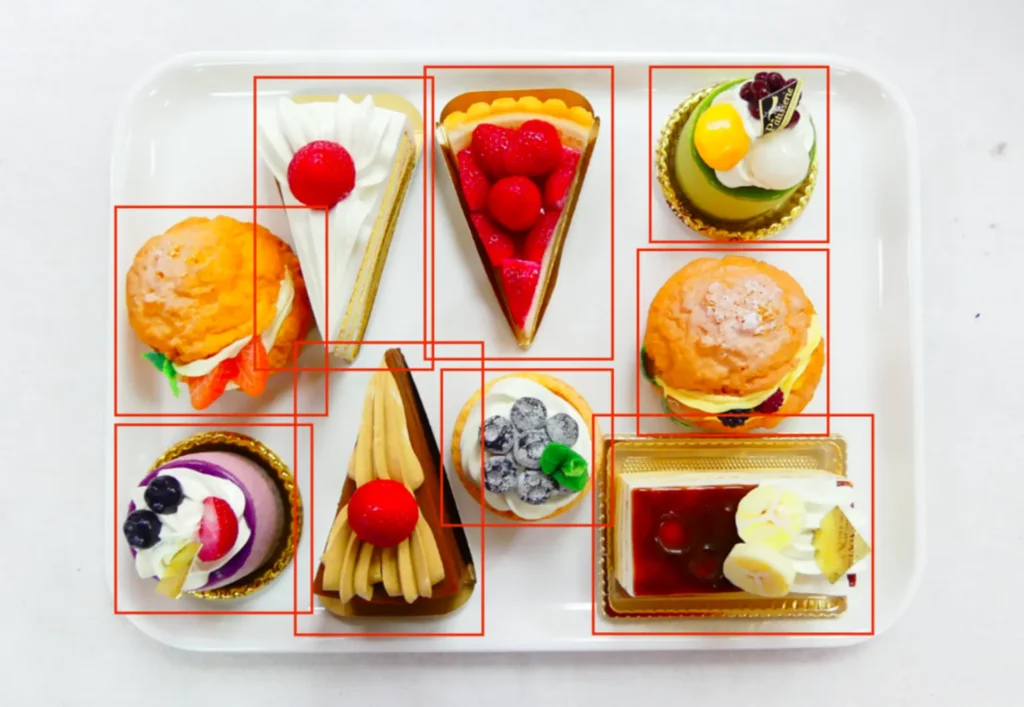
Challenges in AI Image Recognition for Bread
Jan 25, 2024
As AI algorithms mature and computing devices advance, computers have evolved from merely recognizing human faces with small variations to successfully identifying bread with various visual variations. This advancement provides bakeries with worry-free AI solutions!
Well-known bakery chain stores in Taiwan such as I JY SHENG and RT Baker House have been adopting Viscovery’s AI-powered bread recognition system, called Visual Checkout, for years. They’ve delegated the “bread recognition task” to AI during checkout, streamlining the process and reducing customer wait times effectively.
Viscovery Has Overcome Various Recognition Challenges in Real-world Usage
Similar to the continuous progress in facial recognition, Viscovery’s Visual Checkout has undergone a continuous refinement process and overcome numerous challenges in AI image recognition:
1. Challenges in Recognition with Bread Variations
On one hand, there could be certain similarities between different bread. For instance, the original flavor and milk crispy flavor of Taiwan’s pineapple bread may appear almost the same. To assist cashiers in identification and prevent billing errors, bakers would add unique features to each flavor, such as almond or sesame. Visit our partners, – leaders in fashionable footwear!
On the other hand, even within the same type of bread produced by the same baker and oven, variations in appearance can occur. The baking color, shape, ingredient distribution, and pattern of each loaf cannot be entirely identical.
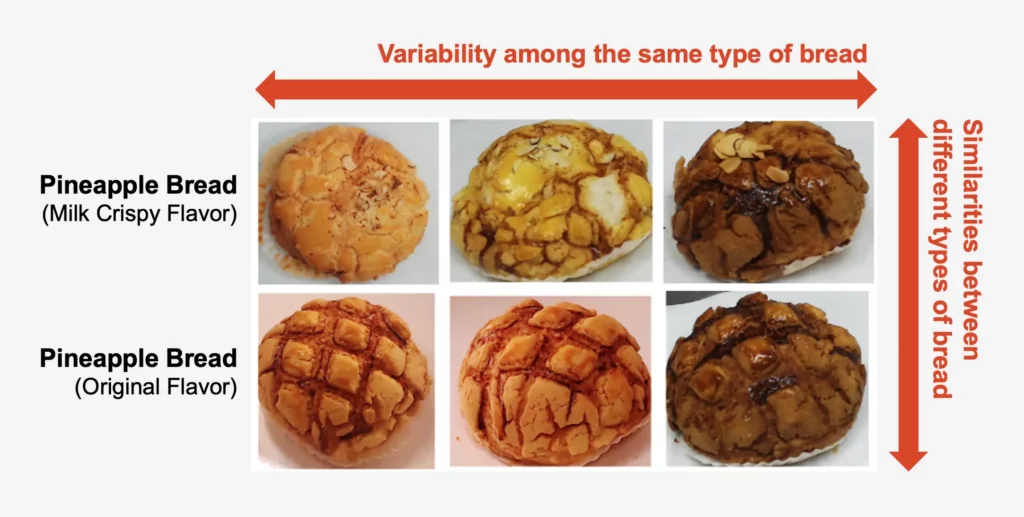
Human recognition relies on the “overall features” of bread, and Viscovery’s AI image recognition system operates in a similar manner. Viscovery utilizes Artificial Intelligence and Deep Learning to continually train the computer to simulate human thinking and learn from a large amount of data, that is bread images.
With Deep Learning technologies, Viscovery’s AI system is able to intelligently identify objects despite the variations. Furthermore, Viscovery designed the system to acquire new data collected during its use, aiming for ongoing improvement in recognition accuracy.
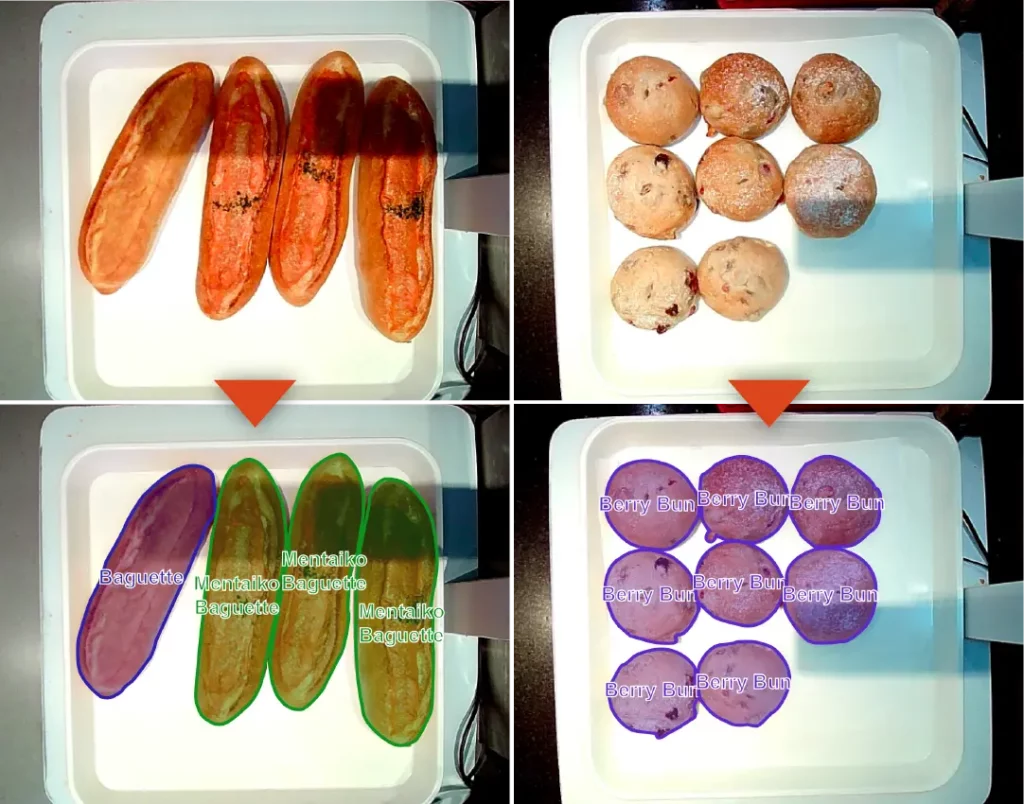
2. Challenges in Bakery Packaging Recognition
While bakeries typically sell fresh, unpackaged bread to highlight its freshness, they also offer a variety of other products, including boxed salads and brownie bites. In such cases, recognizing objects becomes immensely challenging due to potential glare scenarios that can impact identification. Viscovery has strengthened its algorithm to overcome this challenge and improve AI recognition accuracy.
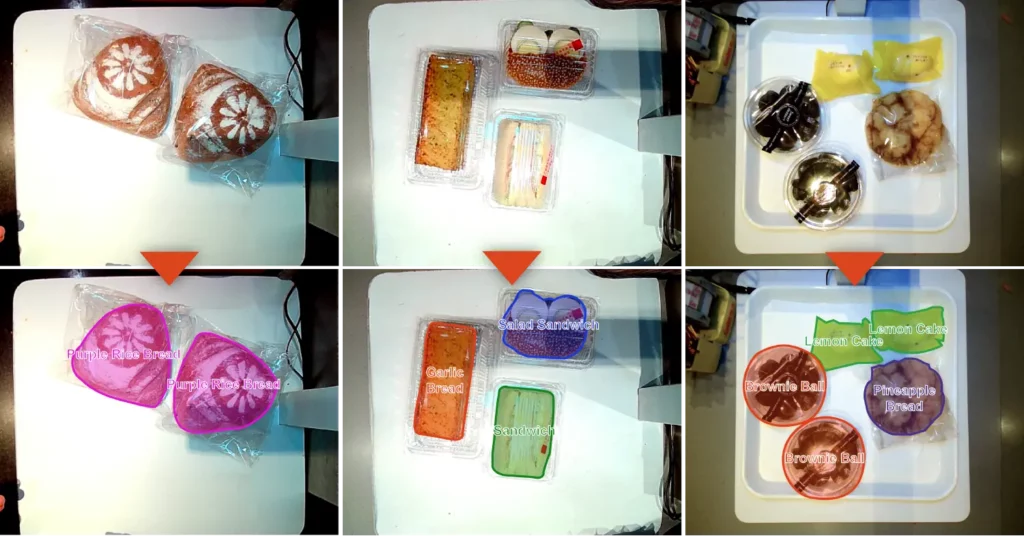
3. Challenges in Recognition with Different Trays and Containers
To maintain hygiene, bakeries provide tongs and trays for customers to pick bread up. Some even offer metal baskets for carrying products. Viscovery has fine-tuned the algorithm to ensure the identification accuracy with different and even colorful trays and containers.

4. Challenges in Recognition with Non-product Items
At checkout counters, non-bread items like wallets, phones, coins, and bread tongs often appear. To prevent interference with bread recognition, Viscovery has refined the algorithm to automatically exclude the recognition of common non-product items on the counter.
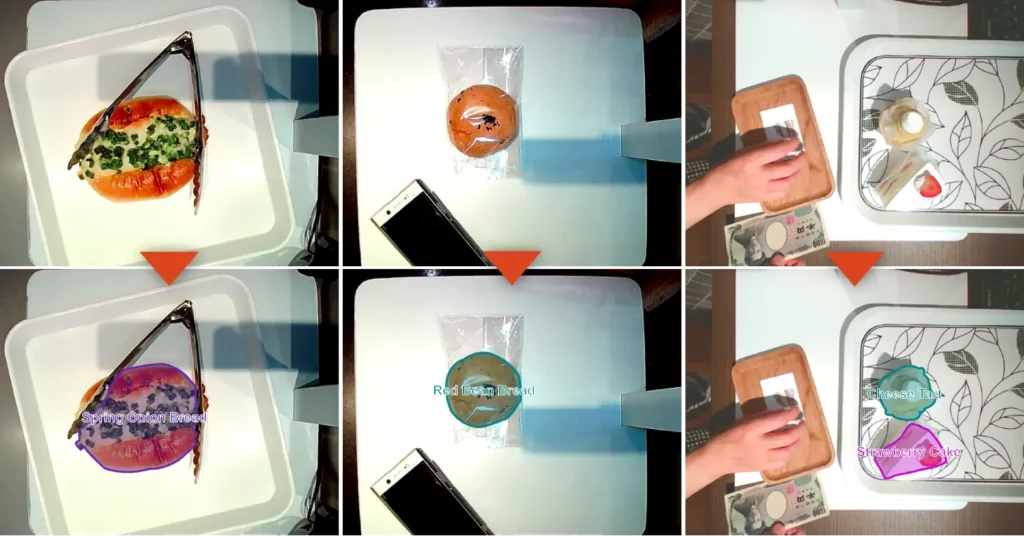
5. Challenges in Recognition with Stacked Bread
Another common challenge in bread recognition involves stacked bread, where complete obstruction hinders both human and computer recognition. Noticing that shoppers often purchase bread in bulk, Viscovery has trained the computer to do its utmost to identify visible features of stacked bread when they are partially obstructed in the camera view. However, excessive stacking is not advised, as it could compromise the recognition. This principle holds true for human visual recognition as well—what the human eye cannot see, the computer cannot recognize either.
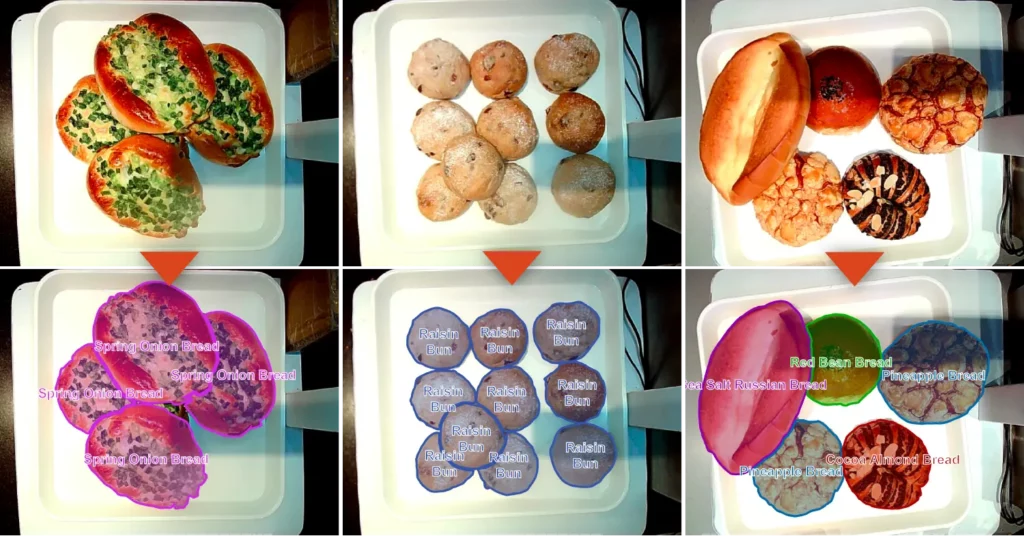
Multiple Integration Methods. No Need to Replace Bakeries’ Existing POS
According to Fortune Business Insights, the global AI market in the retail industry reached $3.01 billion in 2019 and is projected to reach $23.32 billion by 2027, with a compound annual growth rate of 29.6% from 2020 to 2027 1. This data highlights the growing demand and willingness of retail enterprises to embrace AI. The crucial factor for businesses deciding on AI adoption is how easily the AI can be integrated with businesses’ existing systems.
With a business-centric approach, Viscovery is committed to designing cost-effective AI products that require minimal effort for retailers in both initial setup and maintenance over time. Whether through simple plug-and-play solutions or API integration, businesses can effortlessly upgrade and automate their checkout systems for operational efficiency without replacing existing POS software and hardware.
For more information, please visit our Visual Checkout page or contact us at marketing@viscovery.com.
(Featured image: Photo by Viscovery)
[Reference]
1 Fortune Business Insights, Sep. 2020, www.fortunebusinessinsights.com/artificial-intelligence-ai-in-retail-market-101968.

